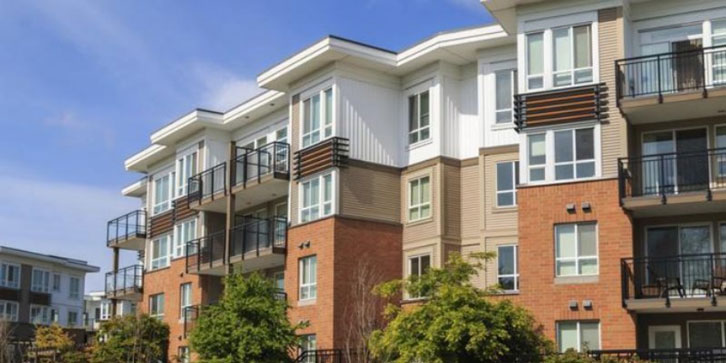What Exactly Is Included With Ho6 Condo Insurance?
Jan 11, 2024 By Susan Kelly
Condo insurance, often called an HO-6 policy, protects condos but co-op units against financial loss due to natural disasters or theft and offers personal liability coverage, including additional living expenses, in the event the building becomes uninhabitable. The condo and founder association's master policy will cover the building's shared facilities, while your HO-6 insurance will protect only your unit. However, condo insurance policies often exclude coverage for water damage. Depending on the location of your apartment and how often you want to use it, you may need supplemental insurance.
What Is Covered By An Ho6 Policy?
Common features in a condo or co-op building, such as corridors, land, and other shared spaces, are often insured under a group policy owned by all unit owners. However, there may be times when this plan does not protect your apartment. Getting condo insurance, also called HO6 insurance, is important. You should ensure that your apartment's additional value is covered if you decide to remodel. Ensure your large-screen TV, golf equipment, and jewels are protected from theft and vandalism with enough insurance. It would help if you were insured against legal action if a guest sustains an injury. Or, you may wish to be covered for extra living costs if a disaster forces you to temporarily vacate your unit due to the destruction from a fire, a windstorm, or another covered event.
What's Covered By Condo/Hoa Master Insurance?

Unless otherwise specified in the bylaws, most condo buildings' common facilities will often be insured under a single "master insurance policy" obtained by the condo association but rather homeowners association (HOA). All interior spaces, from elevators to corridors, are included in this definition, as well as the building's top and exterior. Owners of individual units often pay a portion of the master policy's premium via monthly or annual HOA or condo dues. Condominium master insurance often comes in three different flavors:
Coverage Of The Bare Walls
Bare walls coverage is a master insurance policy that only protects the building itself, not the common spaces' furniture or fixtures. Also included is protection for the association's shared assets.
Coverage For A Single Entity
In addition to the protections afforded by bare-walls policies, single-entity policies cover improvements made to a building, such as the fixtures in a condo.
All-In Coverage
Every single item held by the condo association or physically attached to the unit itself is fully insured. That's because it's the most all-inclusive master condo insurance coverage, protecting all of your condo's upgrades and expansions. The quantity of condo insurance needed to buy is directly related to the master insurance policy your HOA or condo organization has. If you want to know exactly what the policy covers, you should get a copy of the declaration page from the organization. Other kinds of business insurance, such as a fidelity insurance policy to address concerns with personnel dishonesty, may very well be held by condo associations. Still, these policies normally do not apply to your insurance requirements as a condo unit owner.
Coverage For Condo Building Property

When damage affects many units in a condo complex, ownership and insurance coverage concerns between individual owners and the condo organization might arise. Your condo's flooring, inside walls, cabinets, sinks, and tiles are all covered under the building property protection of your condo insurance policy. Your condo insurance policy will pay for repairs to, or replacement of, the unit in the event of damage from a covered risk up to the policy's maximum payout. In most cases, this is the same as buying a brand-new device.
Conclusion
Moreover, if you leave your apartment unoccupied for more than a month, you risk being uninsured for any damage. While away, burglars and maintenance concerns might go unattended at your property. Consider purchasing landlord insurance if you want to rent your house occasionally. This insurance does not cover your renter, but your property and possessions are.
-
 Investment Dec 27, 2023
Investment Dec 27, 2023S and P 500 Index Funds
Index investing has seen momentum in the last decade as passive funds often beat their active counterparts due to cheaper costs. In the world of index investors, the S and P 500 has been the most popular benchmark index to follow.
-
 Investment Oct 18, 2023
Investment Oct 18, 2023Should I Purchase Mutual Funds?
When wanting to diversify their portfolios, investors might consider mutual funds as a suitable option.A mutual fund invests in a variety of securities rather than placing all of your money in one company or industry in an effort to lower your portfolio's risk.
-
 Taxes Jan 08, 2024
Taxes Jan 08, 2024Demystifying Form 1120-S: A Guide to S Corporation Tax Returns
A comprehensive guide to understanding and completing Form 1120-S for S Corporations, highlighting the importance of accuracy and compliance.
-
 Mortgages Dec 09, 2023
Mortgages Dec 09, 2023An Assumable Mortgage: What Is It?
In a financing arrangement known as a "assumable mortgage," the terms of an active mortgage are transferred from the present owner to the buyer. The buyer can avoid getting their own mortgage by taking on the remainder of the previous owner's debt. Although there are some unique variables to keep in mind, many loans can be assumable mortgages.
